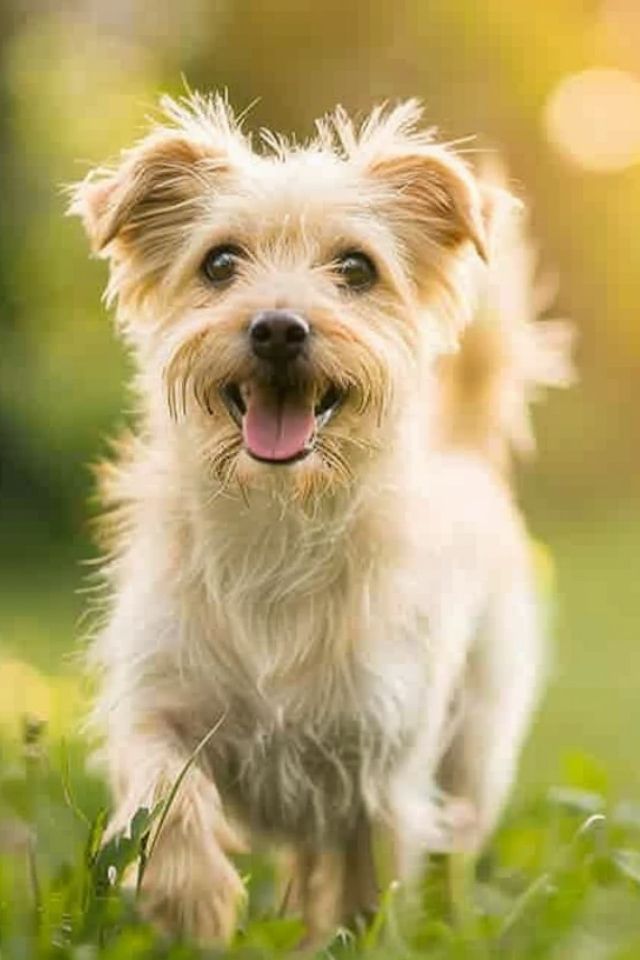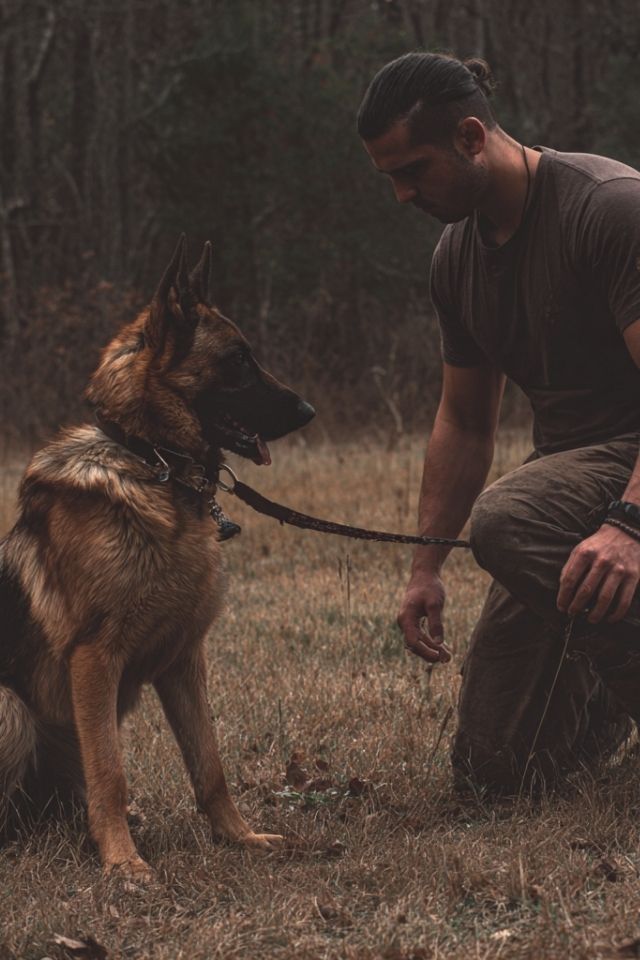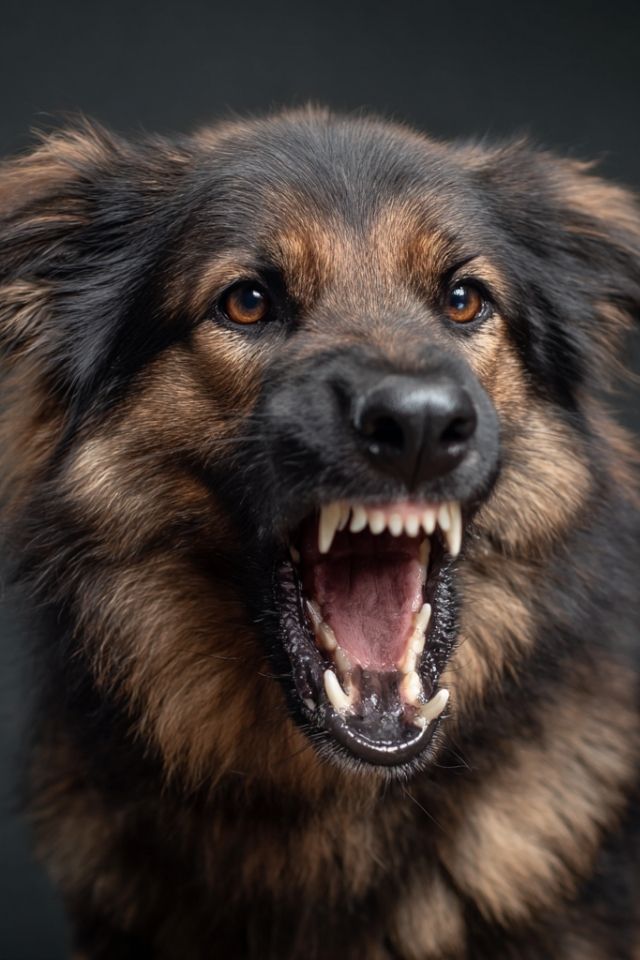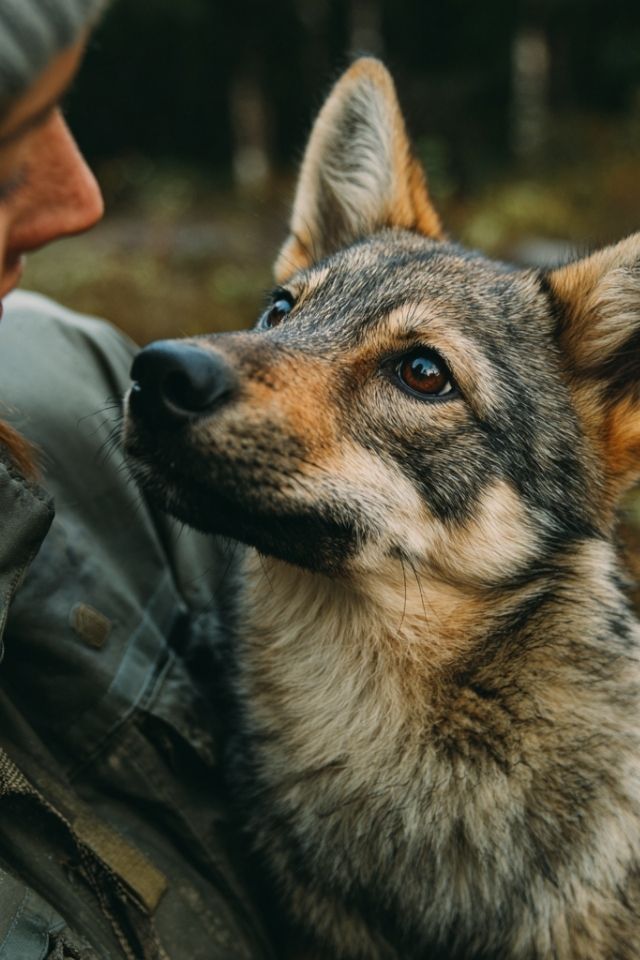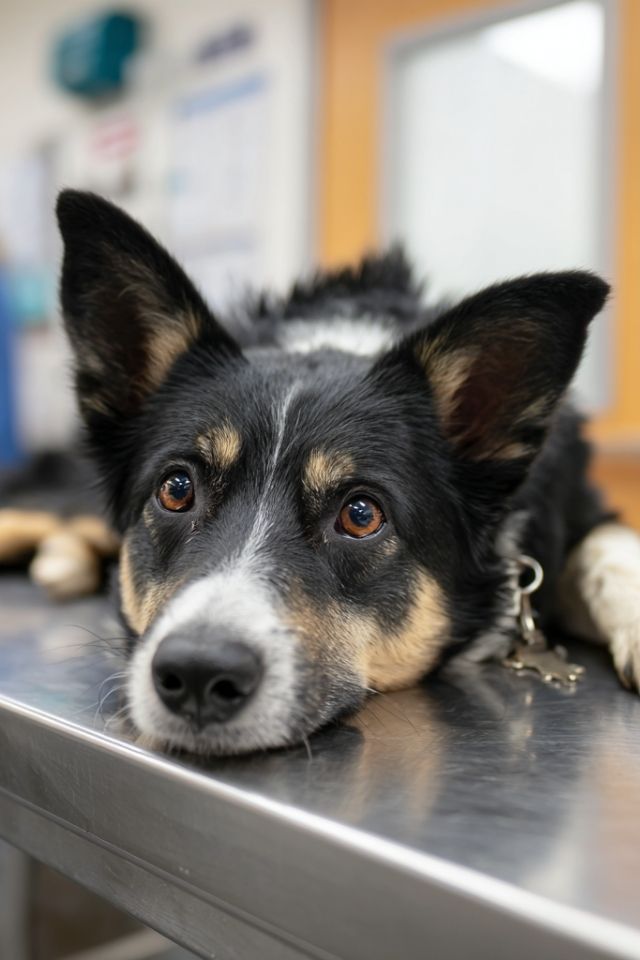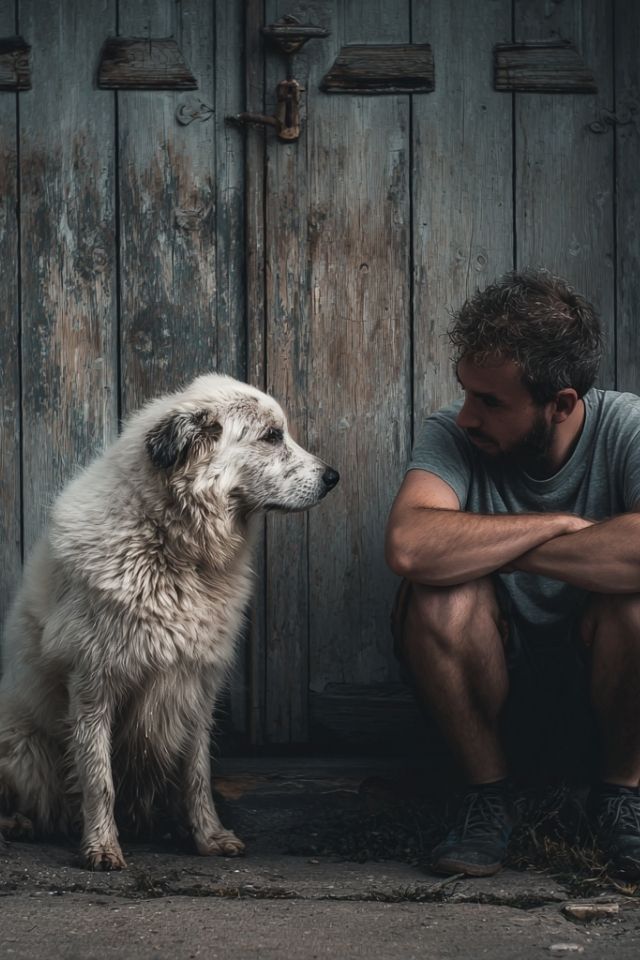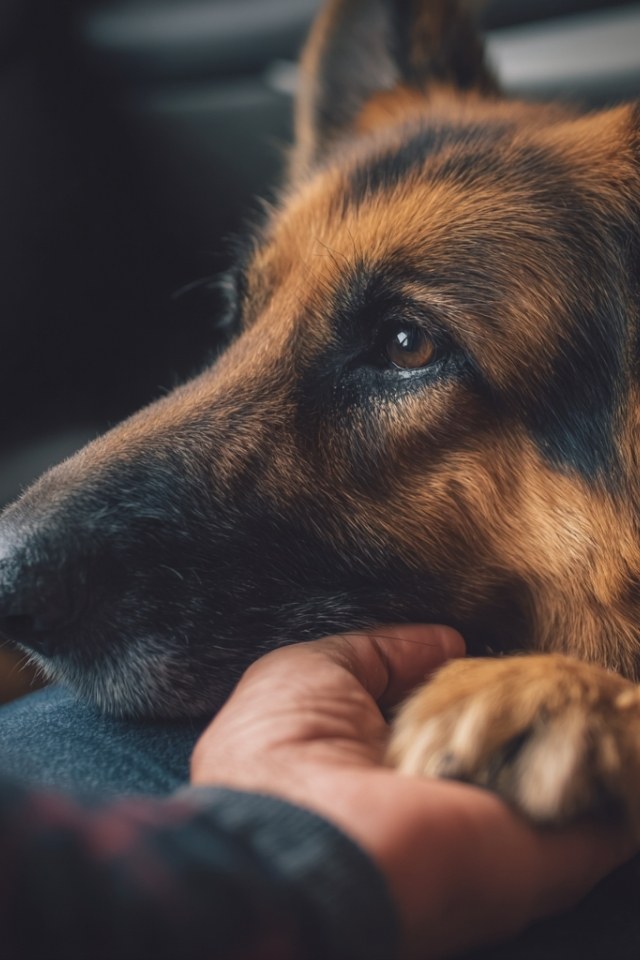The Mirror You Never Knew You Held
There’s a Tuesday afternoon you might recognize. You’re standing in your kitchen, phone pressed to your ear, shoulders climbing toward your ears as the conversation grows tense. You haven’t noticed your breath has gone shallow, or that your jaw has locked. But across the room, your dog has noticed everything.
They rise from their bed—not with the eager bounce of “walk time” or the focused trot toward the food bowl. This movement is different. Hesitant. They approach slowly, eyes soft but watchful, and when they reach you, they don’t settle. They pace. They sigh. They mirror the very tension you thought you were hiding.
This is the Invisible Leash—the energetic cord that binds your emotional world to theirs. It doesn’t require touch or words. It exists in the space between heartbeats, in the chemistry of stress hormones, in the ancient language that predates all others: the silent conversation between two nervous systems learning to breathe as one.
What you’re experiencing isn’t mystical. It’s the profound reality of the NeuroBond—the neurological and emotional synchrony that makes your dog not just a companion, but a living mirror of your inner landscape. And once you understand this connection, everything changes. 🐾
The Languages They Speak That We Forget to Hear
Your dog reads you the way you might read a favorite book—intimately, attentively, catching nuances you didn’t know you’d written.
The Symphony of Sensing
When stress moves through your body, it plays like an orchestra, and your dog hears every instrument. Your voice rises half an octave—a violin string pulled too tight. Your shoulders curve inward—a closing door. The corners of your mouth tighten, your eyes harden at the edges. These are the sheet music of your emotional state, and your dog has been studying this score since the day you met.
But there’s more. Beneath the visible, beneath even the audible, there’s the invisible: the pheromones released when cortisol floods your system, the electromagnetic shift in your presence, the change in the rhythm of your movements. To your dog’s senses, your stress doesn’t whisper—it announces itself in a language older than human speech.
They know when you’re pacing because you’re thinking versus pacing because you’re spiraling. They feel the difference between tired and defeated. They understand the space between your words better than the words themselves.
This is why you cannot hide from them. This is why the mask you wear for everyone else dissolves in their gaze. They see the truth beneath—not because they’re trying to, but because to them, the truth is all there is.
When Their Body Tells Your Story
Watch what happens when your stress becomes theirs. It’s subtle at first—easy to miss if you’re not looking.
The Quiet Signals of a Shared Burden
A yawn that has nothing to do with sleep. A tongue that flicks across their nose once, twice, three times. The whites of their eyes appearing like small moons at the corners—what trainers call “whale eye,” but what truly is: a visible sign of internal pressure building.
Their body begins to speak in the language of displacement. They scratch though there’s no itch. They shake as if emerging from water, though they’re perfectly dry. These aren’t random behaviors—they’re coping mechanisms, small releases of the tension they’ve absorbed from you like a sponge drawing water.
When the Mirror Shows Too Much
But when your stress isn’t a passing storm—when it becomes the climate you live in—their responses shift from momentary to lasting:
- The dog who once greeted your departures with calm acceptance now follows you room to room, unable to let you out of sight
- The steady companion becomes a startling collection of nerves, jumping at sounds that never used to register
- The soft mouth that carried toys gently now fixates on their own paws, licking until the fur thins and the skin beneath shows pink
- The tail that once wagged freely now remains low, uncertain, reading the room for threats that may not exist
This is what happens when the Invisible Leash pulls too tight for too long. Your dog doesn’t just notice your stress anymore—they carry it. They wear it. It becomes part of their baseline, the new normal that rewires their nervous system one anxious day at a time. 🧠
The Biology of Borrowed Feelings
There’s science here, threaded through with grace. Two hearts beating in proximity don’t stay separate for long—they begin to influence each other, to sync and signal, to share the load of living.
When your cortisol rises, theirs often follows—not through some magical transfer, but through the cascade of environmental cues your stressed state creates. Your dog’s amygdala, that ancient sentinel watching for danger, begins to perceive threat where there is none. Their heart rate climbs. Their heart rate variability—that beautiful marker of nervous system flexibility—decreases, becoming rigid, reactive.
This is the NeuroBond at its most challenging: when two nervous systems synchronize not in calm, but in chaos. When the biology meant to keep you connected instead keeps you both on edge.
But here’s what matters: this same connection that can transmit stress can also transmit healing. The cord runs both ways. The mirror reflects not just tension, but also peace.
Stories of Breaking Through
The Woman Who Learned to Breathe
Sarah didn’t realize how much her anxiety was shaping her dog’s world until her Border Collie, Echo, stopped eating. The vet found nothing wrong—no parasites, no pain, no disease. Just a dog who’d absorbed so much vigilance from her human that her stomach had forgotten how to relax enough to accept food.
Sarah began with something small: five conscious breaths before opening the door when she came home from work. Just five. Inhale for four counts, hold, exhale for six. She did this while Echo waited on the other side, likely reading the shift in her energy through the door itself.
Within three days, Echo started eating again. Not because the breath fixed everything—but because it was the first thread Sarah pulled in unraveling her own tension. And Echo, ever the mirror, reflected that shift back.
The Man Who Created Islands of Calm
Marcus worked from home, his stress a constant companion during market volatility. His German Shepherd, Atlas, had developed a pattern: pacing during Marcus’s trading hours, unable to settle, wearing a path in the carpet beside his desk.
Marcus couldn’t eliminate his work stress—but he could create pockets of peace within it. Every two hours, he’d set a timer. When it chimed, he’d close his laptop, step outside with Atlas, and simply stand together in the yard for five minutes. No phone. No thinking about the next trade. Just breathing the same air, watching the same sky.
Atlas’s pacing diminished by half within the first week. By the end of the month, he’d learned that stress came in waves, but so did stillness. The Invisible Leash still connected them—but now it transmitted rest as often as it transmitted tension. 🧡
The Practice of Presence: Weaving a Different Pattern
You cannot eliminate stress from your life. But you can change how it moves through you and, by extension, through your dog.
Anchoring Rituals That Speak to the NeuroBond
Before you reach for your dog when you’re anxious, reach for yourself first:
- Place one hand on your heart, one on your belly. Feel three full breaths move through you before you touch them.
- When you notice your jaw is tight, soften it consciously. Your dog reads the muscles of your face like a language—give them something gentler to read.
- Create a “coming home” ritual: pause outside your door, roll your shoulders back three times, shake out your hands. Leave what you can outside before you enter the space you share with them.
Building Their Independent Ground
Your dog needs to know that their emotional world isn’t entirely dependent on yours. This isn’t distance—it’s healthy differentiation:
- Teach them the gift of their own safe space: a corner, a crate, a room where they can retreat when the household energy feels too loud
- Offer enrichment that engages them fully—scent work, puzzle feeders, the ancient satisfaction of chewing—activities that root them in their own experience, not just yours
- Let them have friendships beyond you: trusted dog companions, beloved walkers, relationships that feed their soul without requiring your presence
The Rhythm That Holds Everything
Dogs are creatures of pattern and prediction. When the world feels chaotic, routine becomes medicine:
- Feed them at the same time, walk them at the same time, rest at the same time
- Even when your own schedule fractures, protect theirs—it’s an anchor in the storm
- Create small ceremonies that signal transitions: the click of the leash means adventure, the sound of their bowl means nourishment, the turning down of lights means rest
These aren’t tricks or training techniques. They’re promises. They’re the architecture of a life that says: even when I struggle, your world remains steady. 😄
When the Mirror Cracks: Knowing When to Seek Help
Some patterns run too deep to shift alone. Some stress has carved grooves so well-worn that they need more than mindfulness and routine to heal.
The Signs That Say “Now”
Your dog isn’t just stressed—they’re disappearing into it:
- The licking has created wounds that won’t heal because they won’t stop
- They’ve stopped eating for days, or they startle so violently at normal sounds that they hurt themselves
- Aggression has entered the picture—not playful boundary-setting, but fear-driven, unpredictable, dangerous
- They cannot be alone for even minutes without panic that tears at furniture, walls, their own bodies
This is when the Invisible Leash has become a noose. This is when you need more hands than your own.
The Village That Holds You Both
Seek those who understand the NeuroBond’s complexity:
- Veterinary behaviorists who see the whole picture—body, brain, behavior, bond
- Force-free trainers who work with the nervous system, not against it
- Your own therapist or counselor, because healing your dog starts with healing the nervous system they’re connected to
There’s no shame in this seeking. There’s only wisdom. 🐾
The Return: Finding Your Way Back to Each Other
Here’s what the Invisible Leash was always meant to be: not a tether that binds you to shared suffering, but a connection that lets you find your way back to each other, again and again, through whatever weather comes.
When you learn to tend your own nervous system—to breathe more slowly, to soften more quickly, to let stress move through you rather than take up residence—your dog learns this too. Not because you taught them commands, but because you showed them, body to body, breath to breath, what regulation looks like.
This is the heart of the NeuroBond: you are not just their human. You are their nervous system’s external compass. And they are yours. You teach each other what it means to return to center after the world has pulled you sideways.
The Practice Never Ends, But It Gets Gentler
Some days you’ll forget. You’ll snap when you didn’t mean to, spiral when you tried not to, bring home stress like mud on your shoes. Your dog will notice. They’ll probably absorb some of it.
And then you’ll remember. You’ll pause, you’ll breathe, you’ll reset. You’ll take them outside and stand together in silence. You’ll play one of those silly games that makes them forget to be vigilant. You’ll simply sit beside them and let your heartbeat slow until theirs does too.
This is the dance. Not perfection, but repair. Not constant calm, but the return to it. Not the elimination of the Invisible Leash, but the honoring of it—choosing, as often as you can, to let it carry peace between you instead of pain.
The Question That Remains
What would change if you truly understood that your dog is reading you right now? Not judging—reading. Not demanding—receiving. Not waiting for you to be perfect—hoping you’ll be present.
What would shift if you recognized that the fastest way to calm your anxious dog isn’t a new training protocol or a different supplement, but a different nervous system at the other end of the leash—yours?
This is the work. Not just for their sake, but for yours. Because the truth of the Invisible Leash cuts both ways: when you help them find peace, you find it too. When you teach them regulation through your own regulated presence, you strengthen the very capacity you’re trying to share.
Your dog has been trying to tell you this all along. They’ve been showing you, with their body, where your stress lives. They’ve been offering you a gift—the chance to see yourself reflected in their eyes, to notice what you’ve been carrying, to set it down before it becomes too heavy for both of you.
The mirror is still there. It’s always been there. But now you know what you’re looking at—and more importantly, you know you can change what it reflects.
One breath at a time. One moment of awareness. One choice to soften when everything in you wants to tighten.
This is how the Invisible Leash becomes what it was always meant to be: not a burden, but a bridge. Not a warning, but a way back home—to yourself, to them, to the quiet place where two nervous systems can finally, beautifully, rest. 🧡🐾
